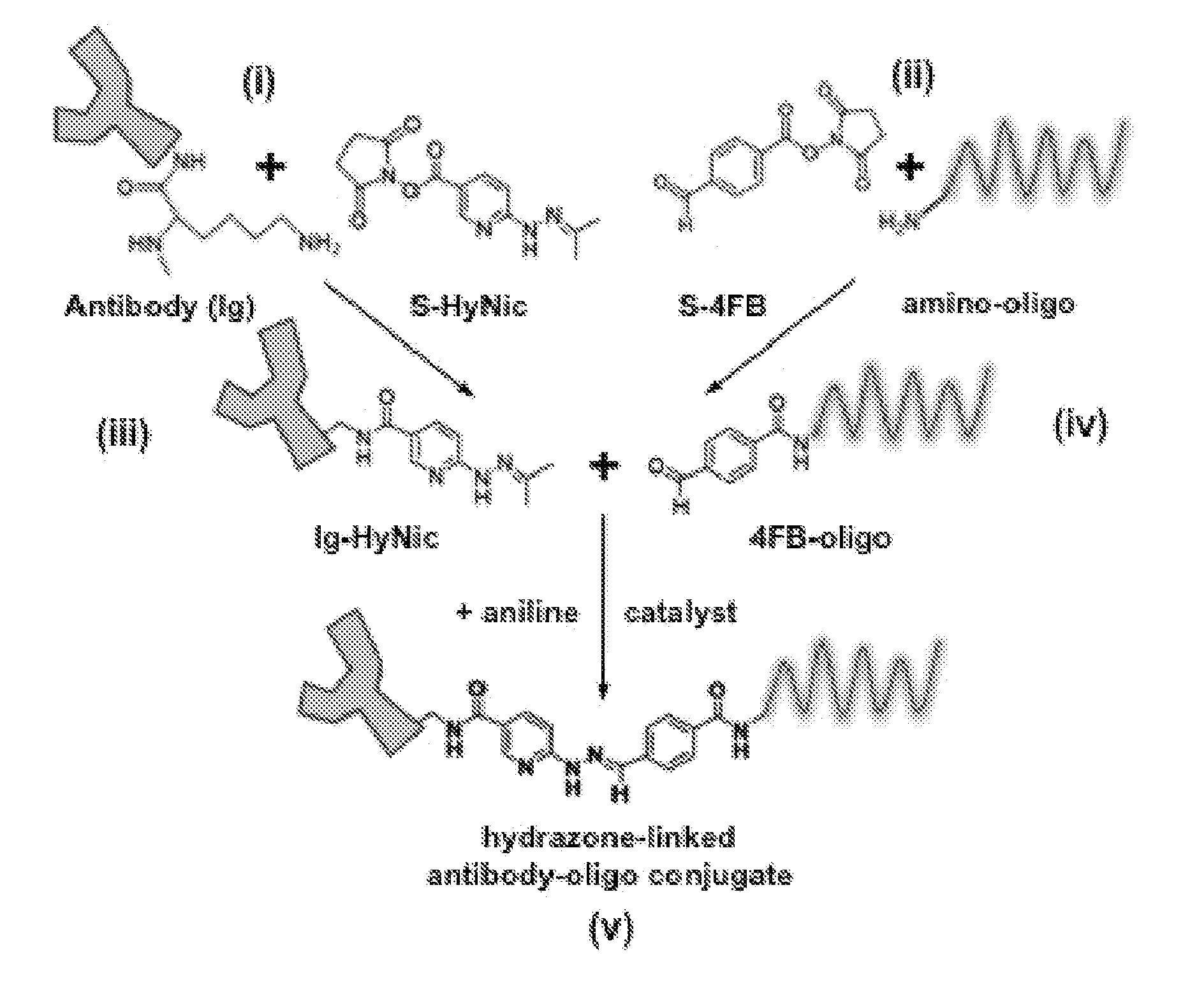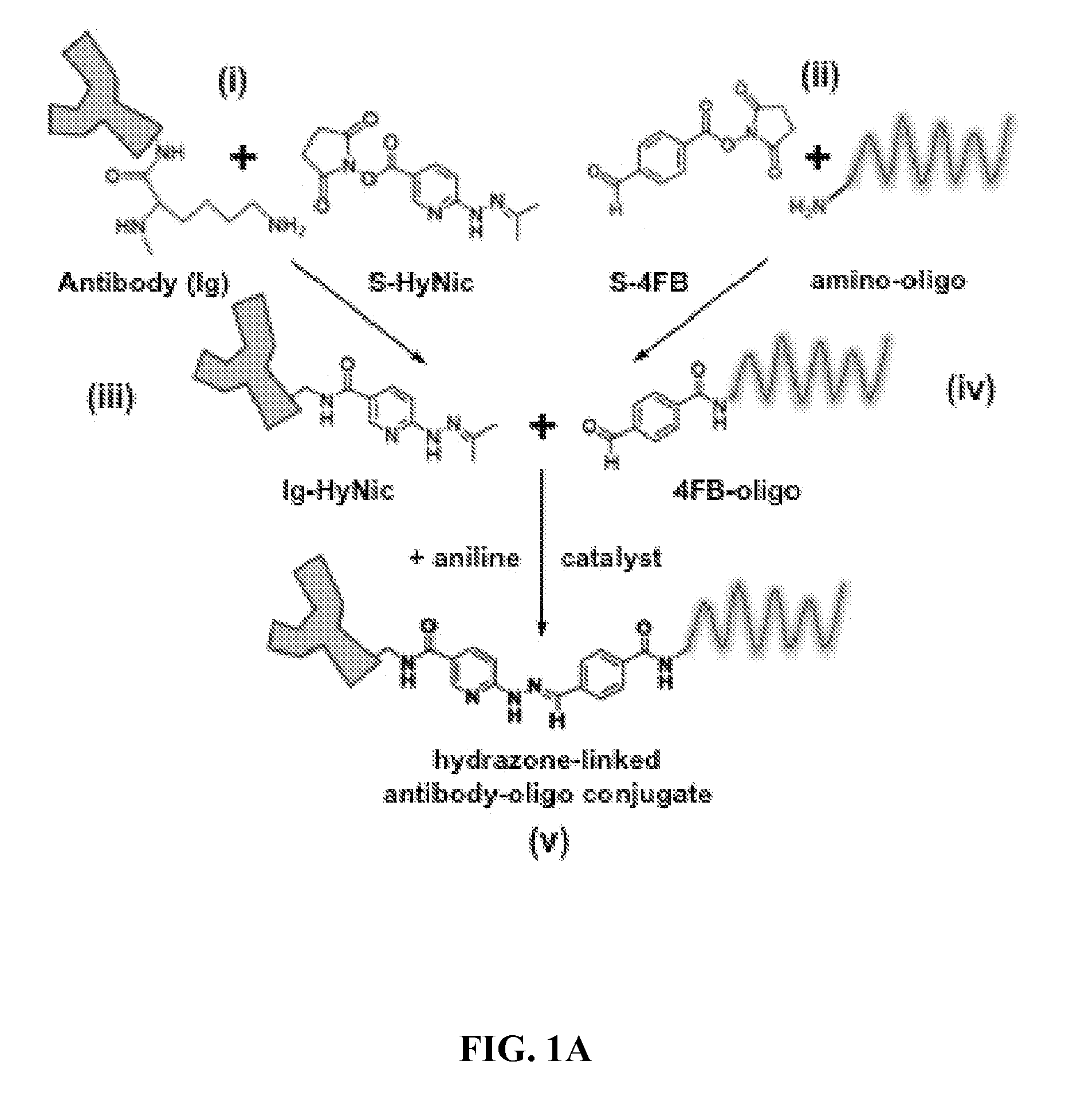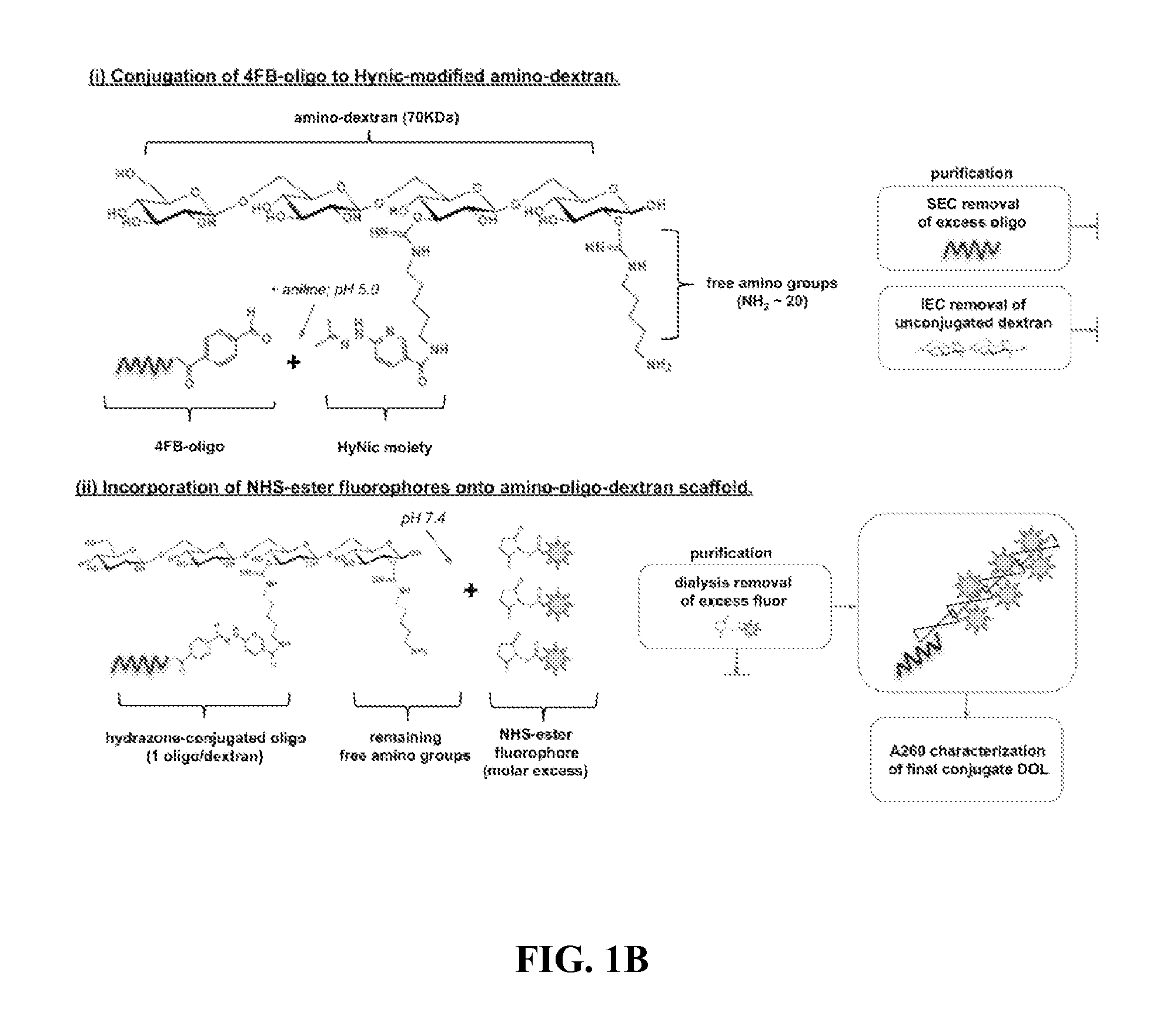Oligonucleotide-mediated quantitative multiplexed immunoassays
a technology of immunoassay and oligonucleotide, applied in the field of immunology, molecular biology, and cellular biology, can solve the problems of deterring many researchers, increasing the cost and preparation time, and varying the results and subsequent interpretation of data across experiments, and achieves low reactivity, stable and robust hybridization activity, and high melting temperature
- Summary
- Abstract
- Description
- Claims
- Application Information
AI Technical Summary
Benefits of technology
Problems solved by technology
Method used
Image
Examples
Embodiment Construction
[0073]Methods and composition for quantitative flow cytometry and quantitative CyTOF are provided herein. Particular embodiments utilize a DNA-directed assembly strategy for cellular labeling. In certain aspects, antibody:oligonucleotide targeting constructs are hybridized to complementary oligonucleotide:fluorophores labeling constructs in solution to create a labeled targeting hybrid. The antibody::fluorophore labeled targeting hybrid is then used to label cellular antigens. Fluorophore-hybridized oligospheres utilizing the same fluorophore used to label the hybridized antibody::fluorophore labeled targeting hybrid are added to the cytometric analysis in order to convert relative units of fluorescence to quantitative measures of Label Per Event (LPE). LPE is then used to calculate the number of Antibodies Bound per Cell (ABC) based on the known label-target ratio established during the construct ligation step.
[0074]Various embodiments described herein provide a qu...
PUM
| Property | Measurement | Unit |
|---|---|---|
| Fluorescence | aaaaa | aaaaa |
Abstract
Description
Claims
Application Information
 Login to View More
Login to View More - R&D
- Intellectual Property
- Life Sciences
- Materials
- Tech Scout
- Unparalleled Data Quality
- Higher Quality Content
- 60% Fewer Hallucinations
Browse by: Latest US Patents, China's latest patents, Technical Efficacy Thesaurus, Application Domain, Technology Topic, Popular Technical Reports.
© 2025 PatSnap. All rights reserved.Legal|Privacy policy|Modern Slavery Act Transparency Statement|Sitemap|About US| Contact US: help@patsnap.com



